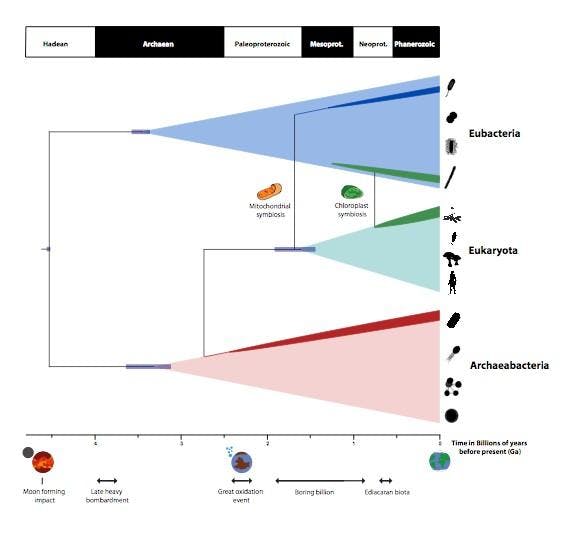Ancestor of All Cellular Life on Earth Appeared
Way Earlier Than We Thought
Ogmog said:
Ancestor of All Cellular Life on Earth Appeared
Way Earlier Than We Thought
“The Late Heavy Bombardment (abbreviated LHB and also known as the lunar cataclysm) is an event thought to have occurred approximately 4.1 to 3.8 billion years (Ga) ago”.
The late heavy bombardment created most of the craters on the Moon. It has been widely thought by biologists that it was so heavy as to have wiped out all previous life on Earth. I’ve never accepted that. Although all the Earth’s surface was covered in craters, these did not happen all at once, giving life on Earth a chance to recover after each major hit.
“About 4.5 billion years ago, a proto-planet named Theia crashed into Earth, birthing our moon”. The chance of Life on Earth before that surviving that impact is very slim. Not impossible but very slim.
“Scientists previously pegged the LUCA’s birth to a period 3.5 to 3.8 billion years ago, but the new evidence examined in the study suggests it happened 3.9 billion years ago.”
OK.
“All in all, the team examined 29 genes from a total of 102 living organisms representing bacteria, archaea, and eukaryotes (multicellular organisms that include animals, plants, and fungi). Then they used nine fossils to anchor the tree, including microfossils found in Australia’s Strelley Pool formation that are dated to about 3.4 billion years old, making them the oldest confirmed fossils.”
I hadn’t heard of Strelley Pool.
“Using the tree, the scientists determined that bacteria and archaea emerged about one billion years after LUCA”
Um, what! I’d thought that the separation of archaea and bacteria was what defined LUCA?
Mixing of genes between unrelated species comes into play here, and they seem to have taken this into account.
Or perhaps I have heard of Strelley Pool, they’re WA stromatolite fossils. This news article from 2015 seems relevant.
“3.46-billion-year-old ‘fossils’ were not created by life forms. What are the oldest fossils on Earth? For a long time, a 3.46-billion-year-old rock from Western Australia seemed to hold the record. A 1993 Science paper suggested that the Apex chert contained tiny, wormy structures (pictured) that could have been fossilized cell walls of some of the world’s first cyanobacteria. But now there is more evidence that these structures have nothing to do with life. The elongated filaments were instead created by minerals forming in hydrothermal systems. After the minerals were formed, carbon glommed on to the edges, leaving behind an organic signature that looked suspiciously like cell walls. So that means for now the record will have to go to rocks that are 30 million years younger—the 3.43-billion-year-old Strelley Pool formation, also from Western Australia, which contains stronger evidence of microfossils: hollow, bag-shaped bodies arranged in chains or clusters.”
That’s cyanobacteria. They’re true bacteria aren’t they?
If so, then why the claim that “bacteria and archaea emerged about one billion years after LUCA”. And come to think of it, why does the imaged chart above show a separation at 4.5 billion years rather than 3.9 billion years?
